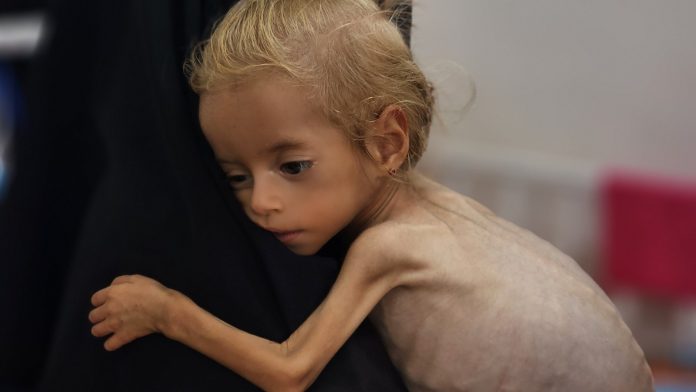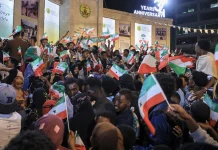
Inside Gaza’s Growing Hunger Crisis: A Humanitarian Catastrophe Unfolding
In the shadowed alleys of Gaza, a silent and deadly adversary is stalking its victims—hunger. A recent assessment by the Integrated Food Security Phase Classification (IPC) has painted a grim picture: famine has taken root in Gaza, an enclave already ravaged by relentless conflict. For nearly a quarter million people, the pangs of starvation are not a distant threat but a brutal daily reality, with the crisis poised to deepen alarmingly in the coming weeks.
Famine Declared: The Numbers Behind the Crisis
The latest report from IPC is unprecedented in Gaza’s recent history. It declares that approximately 514,000 Palestinians living in Gaza are currently enduring famine conditions—an intensity of food deprivation so severe it is officially recognized by humanitarian experts. By the end of September, this figure is expected to swell to 641,000, nearly one-third of Gaza’s 2.2 million residents.
Of particular concern is the Gaza governorate—the densely populated northern area encompassing Gaza City—which falls squarely within famine conditions for the first time according to IPC’s standards. The central and southern regions, Deir al-Balah and Khan Younis, are also bracing for the spread of this brutal scourge. To give you an idea of the severity, IPC’s famine classification is not handed out lightly: it requires that at least 20% of people suffer extreme food shortages, one in three children be acutely malnourished, and two out of every 10,000 people die daily due to starvation or related illnesses.
The Human Toll: Stories from the Ground
At the Al-Aqsa Martyrs Hospital in Deir al-Balah, the faces of this famine are heartbreakingly clear. Doctors tirelessly work to treat severely malnourished children, whose frail bodies tell the stories of countless meals missed, nutrients never absorbed. Take little Edhem Mohammed Abu Urmana, a three-year-old boy sleeping on the floor of his family’s tent in the Nuseirat refugee camp. His innocent slumber masks a harsh reality—a world where basics like food and medical care have become scarce luxuries.
Local nurse Fatima Khalil shares the daily reality: “Every child that comes in is a reminder that hunger is not just a statistic. We see the weakness, the tears, the desperation of families who have nothing left to give.” Her voice quivers with exhaustion and sorrow. “We don’t just treat bodies here; we witness shattered hopes.”
A War, a Siege, and a Humanitarian Dilemma
This famine didn’t emerge overnight. It’s the tragic culmination of nearly two years of escalating conflict between Israel and Hamas, triggered by the horrific attack by Hamas on 7 October 2023, which claimed 1,200 Israeli lives and took 250 hostages. The Israeli military’s retaliatory campaign has since devastated Gaza, resulting in over 62,000 Palestinian deaths according to local health authorities.
Israel controls all access into Gaza, including the flow of food, medicine, and fuel. The strangulation of supplies has turned Gaza into what UN Secretary-General Antonio Guterres has repeatedly called an “epic humanitarian catastrophe.” As of today, humanitarian aid remains severely restricted, fueling the famine that IPC has documented.
Yet, responses have been mired in controversy and political contestation. Israel’s Coordinator of Government Activities in the Territories (COGAT) has rebuffed the famine report, dismissing it as based on partial and allegedly biased data supplied by Hamas. “We categorically reject claims of famine, especially in Gaza City,” a COGAT spokesperson told the press, calling the analysis “unprofessional.”
On the other side, the United Nations and human rights officials are sounding alarm bells. Volker Türk, UN human rights chief, condemned the famine as a direct consequence of Israeli blockades and warned categorically that deaths from starvation under such circumstances may constitute war crimes. His stark warning adds to a chorus of voices calling for immediate international intervention.
Echoes from the Global Community
The global outrage is palpable. Humanitarian organizations, including ActionAid, voice a collective cry. “Time has run out for Gaza,” Riham Jafari, ActionAid’s Advocacy and Communications Director, urged during a recent broadcast. “We cannot afford silence or inaction while atrocities continue. This is a call for urgent, decisive action.”
Indeed, Jafari warns that the impending Israeli military push to seize Gaza City could displace about one million Palestinians—people who would have nowhere to seek refuge. “It’s a death sentence,” she said bluntly. “No infrastructure to support them, no safety nets.”
Meanwhile, a recent Reuters/Ipsos poll revealed that 65% of Americans believe the US should assist those starving in Gaza, signaling shifting public sentiments in a nation long supportive of Israel. This marks a poignant inflection point that could influence diplomatic stances amid a fraught, multifaceted regional conflict.
Understanding Famine in Gaza: Causes Beyond the Headlines
Famine is rarely a simple headline—it’s a web of complex and interlinked causes: warfare, blockade, political strategies, and civilian suffering. The IPC’s designation of famine conditions is the product of methodical data collected over years by 21 aid groups alongside UN agencies and regional bodies, backed by European Union funding. Their painstaking effort brings a stark clarity to the situation in Gaza.
Consider these grim facts:
- One in three children in famine areas exhibit acute malnutrition.
- The daily death rates from starvation and disease reach or exceed 2 per 10,000 people.
- Food supply lines are held hostage to politics and conflict, cutting off essential aid to most vulnerable communities.
Despite Israel’s arguments about recent upticks in aid deliveries, obstacles persist in distributing aid within Gaza’s war-torn neighborhoods, exacerbated by security risks, infrastructure devastation, and growing lawlessness.
Looking Beyond Gaza: Reflections on Humanity and Responsibility
As the conflict grinds on and the famine spreads, one must ask: what does this mean for us as a global community? How can we reconcile the enduring human suffering with geopolitical imperatives that seem locked in eternal standoff?
This crisis in Gaza is a mirror reflecting broader themes of displacement, survival, and the right to life under siege. It highlights the fragility of modern humanitarian aid amidst political divisions and military strife. And it reminds us that famine is never a natural disaster—it is manmade.
Perhaps the greatest challenge is motivation: will the world respond before another child slips away, before another family is rendered destitute? Will compassion and diplomacy overcome entrenched hostility and suspicion? As readers around the world, we face these difficult questions alongside those in Gaza who have far less choice.
From Gaza, a Call to Witness and Action
Gaza is more than a geopolitical hotspot or a statistics page in a report. It’s a place where parents cling to their children’s fragile lives, where doctors battle despair with dwindling supplies, where a community’s endurance is tested beyond measure.
If famine defines the most desperate form of human suffering, then Gaza is pleading for a lifeline. It is an urgent appeal to every citizen, leader, and humanitarian actor: to confront uncomfortable truths, to champion human dignity, and to come together—not just in words, but in courageous, compassionate action.
After all, hunger does not discriminate by nationality, ethnicity, or politics. It tests the very essence of our shared humanity. Will we rise to the occasion?









